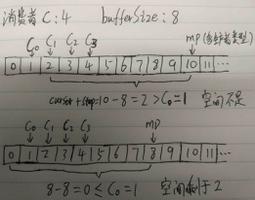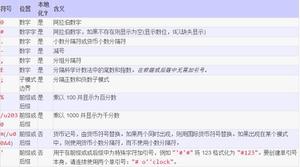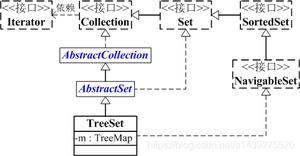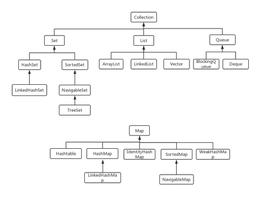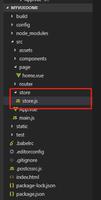RedisTemplate用法详解

新增RedisTemplate封装工具类 : 最全的 基于 RedisTemplate 封装的 RedisUtils 工具类
Redis 可以存储键与5种不同数据结构类型之间的映射,这5种数据结构类型分别为String(字符串)、List(列表)、Set(集合)、Hash(散列)和 Zset(有序集合)。
Redis的String数据结构
set void set(K key, V value);
redisTemplate.opsForValue().set("num","123");
redisTemplate.opsForValue().get("num") 输出结果为123
set void set(K key, V value, long timeout, TimeUnit unit);
redisTemplate.opsForValue().set("num","123",10, TimeUnit.SECONDS);
redisTemplate.opsForValue().get("num")设置的是10秒失效,十秒之内查询有结果,十秒之后返回为null
set void set(K key, V value, long offset);
覆写(overwrite)给定 key 所储存的字符串值,从偏移量 offset 开始
template.opsForValue().set("key","hello world");
template.opsForValue().set("key","redis", 6);
System.out.println("***************"+template.opsForValue().get("key"));
结果:***************hello redis
get V get(Object key);
template.opsForValue().set("key","hello world");
System.out.println("***************"+template.opsForValue().get("key"));
结果:***************hello world
getAndSet V getAndSet(K key, V value);
设置键的字符串值并返回其旧值
template.opsForValue().set("getSetTest","test");
System.out.println(template.opsForValue().getAndSet("getSetTest","test2"));
结果:test
append Integer append(K key, String value);
如果key已经存在并且是一个字符串,则该命令将该值追加到字符串的末尾。如果键不存在,则它被创建并设置为空字符串,因此APPEND在这种特殊情况下将类似于SET。
template.opsForValue().append("test","Hello");
System.out.println(template.opsForValue().get("test"));
template.opsForValue().append("test","world");
System.out.println(template.opsForValue().get("test"));
Hello
Helloworld
size Long size(K key);
返回key所对应的value值得长度
template.opsForValue().set("key","hello world");
System.out.println("***************"+template.opsForValue().size("key"));
***************11
Redis的List数据结构
Long size(K key);
返回存储在键中的列表的长度。如果键不存在,则将其解释为空列表,并返回0。当key存储的值不是列表时返回错误。
System.out.println(template.opsForList().size("list"));
6
Long leftPush(K key, V value);
将所有指定的值插入存储在键的列表的头部。如果键不存在,则在执行推送操作之前将其创建为空列表。(从左边插入)
template.opsForList().leftPush("list","java");
template.opsForList().leftPush("list","python");
template.opsForList().leftPush("list","c++");
返回的结果为推送操作后的列表的长度
1
2
3
Long leftPushAll(K key, V... values);
批量把一个数组插入到列表中
String[] strs = new String[]{"1","2","3"};
template.opsForList().leftPushAll("list",strs);
System.out.println(template.opsForList().range("list",0,-1));
[3, 2, 1]
Long rightPush(K key, V value);
将所有指定的值插入存储在键的列表的头部。如果键不存在,则在执行推送操作之前将其创建为空列表。(从右边插入)
template.opsForList().rightPush("listRight","java");
template.opsForList().rightPush("listRight","python");
template.opsForList().rightPush("listRight","c++");
1
2
3
Long rightPushAll(K key, V... values);
String[] strs = new String[]{"1","2","3"};
template.opsForList().rightPushAll("list",strs);
System.out.println(template.opsForList().range("list",0,-1));
[1, 2, 3]
void set(K key, long index, V value);
在列表中index的位置设置value值
System.out.println(template.opsForList().range("listRight",0,-1));
template.opsForList().set("listRight",1,"setValue");
System.out.println(template.opsForList().range("listRight",0,-1));
[java, python, oc, c++]
[java, setValue, oc, c++]
Long remove(K key, long count, Object value);
从存储在键中的列表中删除等于值的元素的第一个计数事件。
计数参数以下列方式影响操作:
count> 0:删除等于从头到尾移动的值的元素。
count <0:删除等于从尾到头移动的值的元素。
count = 0:删除等于value的所有元素。
System.out.println(template.opsForList().range("listRight",0,-1));
template.opsForList().remove("listRight",1,"setValue");//将删除列表中存储的列表中第一次次出现的“setValue”。
System.out.println(template.opsForList().range("listRight",0,-1));
[java, setValue, oc, c++]
[java, oc, c++]
V index(K key, long index);
根据下表获取列表中的值,下标是从0开始的
System.out.println(template.opsForList().range("listRight",0,-1));
System.out.println(template.opsForList().index("listRight",2));
[java, oc, c++]
c++
V leftPop(K key);
弹出最左边的元素,弹出之后该值在列表中将不复存在
System.out.println(template.opsForList().range("list",0,-1));
System.out.println(template.opsForList().leftPop("list"));
System.out.println(template.opsForList().range("list",0,-1));
[c++, python, oc, java, c#, c#]
c++
[python, oc, java, c#, c#]
V rightPop(K key);
弹出最右边的元素,弹出之后该值在列表中将不复存在
System.out.println(template.opsForList().range("list",0,-1));
System.out.println(template.opsForList().rightPop("list"));
System.out.println(template.opsForList().range("list",0,-1));
[python, oc, java, c#, c#]
c#
[python, oc, java, c#]
Redis的Hash数据机构
Long delete(H key, Object... hashKeys);
删除给定的哈希hashKeys
System.out.println(template.opsForHash().delete("redisHash","name"));
System.out.println(template.opsForHash().entries("redisHash"));
1
{class=6, age=28.1}
Boolean hasKey(H key, Object hashKey);
确定哈希hashKey是否存在
System.out.println(template.opsForHash().hasKey("redisHash","666"));
System.out.println(template.opsForHash().hasKey("redisHash","777"));
true
false
HV get(H key, Object hashKey);
从键中的哈希获取给定hashKey的值
System.out.println(template.opsForHash().get("redisHash","age"));
26
Set<HK> keys(H key);
获取key所对应的散列表的key
System.out.println(template.opsForHash().keys("redisHash"));
//redisHash所对应的散列表为{class=1, name=666, age=27}
[name, class, age]
Long size(H key);
获取key所对应的散列表的大小个数
System.out.println(template.opsForHash().size("redisHash"));
//redisHash所对应的散列表为{class=1, name=666, age=27}
3
void putAll(H key, Map<? extends HK, ? extends HV> m);
使用m中提供的多个散列字段设置到key对应的散列表中
Map<String,Object> testMap = new HashMap();
testMap.put("name","666");
testMap.put("age",27);
testMap.put("class","1");
template.opsForHash().putAll("redisHash1",testMap);
System.out.println(template.opsForHash().entries("redisHash1"));
{class=1, name=jack, age=27}
void put(H key, HK hashKey, HV value);
设置散列hashKey的值
template.opsForHash().put("redisHash","name","666");
template.opsForHash().put("redisHash","age",26);
template.opsForHash().put("redisHash","class","6");
System.out.println(template.opsForHash().entries("redisHash"));
{age=26, class=6, name=666}
List<HV> values(H key);
获取整个哈希存储的值根据密钥
System.out.println(template.opsForHash().values("redisHash"));
[tom, 26, 6]
Map<HK, HV> entries(H key);
获取整个哈希存储根据密钥
System.out.println(template.opsForHash().entries("redisHash"));
{age=26, class=6, name=tom}
Cursor<Map.Entry<HK, HV>> scan(H key, ScanOptions options);
使用Cursor在key的hash中迭代,相当于迭代器。
Cursor<Map.Entry<Object, Object>> curosr = template.opsForHash().scan("redisHash",
ScanOptions.ScanOptions.NONE);
while(curosr.hasNext()){
Map.Entry<Object, Object> entry = curosr.next();
System.out.println(entry.getKey()+":"+entry.getValue());
}
age:27
class:6
name:666
Redis的Set数据结构
Long add(K key, V... values);
无序集合中添加元素,返回添加个数
也可以直接在add里面添加多个值 如:template.opsForSet().add("setTest","aaa","bbb")
String[] strs= new String[]{"str1","str2"};
System.out.println(template.opsForSet().add("setTest", strs));
2
Long remove(K key, Object... values);
移除集合中一个或多个成员
String[] strs = new String[]{"str1","str2"};
System.out.println(template.opsForSet().remove("setTest",strs));
2
V pop(K key);
移除并返回集合中的一个随机元素
System.out.println(template.opsForSet().pop("setTest"));
System.out.println(template.opsForSet().members("setTest"));
bbb
[aaa, ccc]
Boolean move(K key, V value, K destKey);
将 member 元素从 source 集合移动到 destination 集合
template.opsForSet().move("setTest","aaa","setTest2");
System.out.println(template.opsForSet().members("setTest"));
System.out.println(template.opsForSet().members("setTest2"));
[ccc]
[aaa]
Long size(K key);
无序集合的大小长度
System.out.println(template.opsForSet().size("setTest"));
1
Set<V> members(K key);
返回集合中的所有成员
System.out.println(template.opsForSet().members("setTest"));
[ddd, bbb, aaa, ccc]
Cursor<V> scan(K key, ScanOptions options);
遍历set
Cursor<Object> curosr = template.opsForSet().scan("setTest", ScanOptions.NONE);
while(curosr.hasNext()){
System.out.println(curosr.next());
}
ddd
bbb
aaa
ccc
Redis的ZSet数据结构
Boolean add(K key, V value, double score);
新增一个有序集合,存在的话为false,不存在的话为true
System.out.println(template.opsForZSet().add("zset1","zset-1",1.0));
true
Long add(K key, Set<TypedTuple<V>> tuples);
新增一个有序集合
ZSetOperations.TypedTuple<Object> objectTypedTuple1 = new DefaultTypedTuple<>("zset-5",9.6);
ZSetOperations.TypedTuple<Object> objectTypedTuple2 = new DefaultTypedTuple<>("zset-6",9.9);
Set<ZSetOperations.TypedTuple<Object>> tuples = new HashSet<ZSetOperations.TypedTuple<Object>>();
tuples.add(objectTypedTuple1);
tuples.add(objectTypedTuple2);
System.out.println(template.opsForZSet().add("zset1",tuples));
System.out.println(template.opsForZSet().range("zset1",0,-1));
[zset-1, zset-2, zset-3, zset-4, zset-5, zset-6]
Long remove(K key, Object... values);
从有序集合中移除一个或者多个元素
System.out.println(template.opsForZSet().range("zset1",0,-1));
System.out.println(template.opsForZSet().remove("zset1","zset-6"));
System.out.println(template.opsForZSet().range("zset1",0,-1));
[zset-1, zset-2, zset-3, zset-4, zset-5, zset-6]
1
[zset-1, zset-2, zset-3, zset-4, zset-5]
Long rank(K key, Object o);
返回有序集中指定成员的排名,其中有序集成员按分数值递增(从小到大)顺序排列
System.out.println(template.opsForZSet().range("zset1",0,-1));
System.out.println(template.opsForZSet().rank("zset1","zset-2"));
[zset-2, zset-1, zset-3, zset-4, zset-5]
0 //表明排名第一
Set<V> range(K key, long start, long end);
通过索引区间返回有序集合成指定区间内的成员,其中有序集成员按分数值递增(从小到大)顺序排列
System.out.println(template.opsForZSet().range("zset1",0,-1));
[zset-2, zset-1, zset-3, zset-4, zset-5]
Long count(K key, double min, double max);
通过分数返回有序集合指定区间内的成员个数
System.out.println(template.opsForZSet().rangeByScore("zset1",0,5));
System.out.println(template.opsForZSet().count("zset1",0,5));
[zset-2, zset-1, zset-3]
3
Long size(K key);
获取有序集合的成员数,内部调用的就是zCard方法
System.out.println(template.opsForZSet().size("zset1"));
6
Double score(K key, Object o);
获取指定成员的score值
System.out.println(template.opsForZSet().score("zset1","zset-1"));
2.2
Long removeRange(K key, long start, long end);
移除指定索引位置的成员,其中有序集成员按分数值递增(从小到大)顺序排列
System.out.println(template.opsForZSet().range("zset2",0,-1));
System.out.println(template.opsForZSet().removeRange("zset2",1,2));
System.out.println(template.opsForZSet().range("zset2",0,-1));
[zset-1, zset-2, zset-3, zset-4]
2
[zset-1, zset-4]
Cursor<TypedTuple<V>> scan(K key, ScanOptions options);
遍历zset
Cursor<ZSetOperations.TypedTuple<Object>> cursor = template.opsForZSet().scan("zzset1", ScanOptions.NONE);
while (cursor.hasNext()){
ZSetOperations.TypedTuple<Object> item = cursor.next();
System.out.println(item.getValue() + ":" + item.getScore());
}
zset-1:1.0
zset-2:2.0
zset-3:3.0
zset-4:6.0
————————————————
版权声明:本文为CSDN博主「Lion Li」的原创文章,遵循 CC 4.0 BY-SA 版权协议,转载请附上原文出处链接及本声明。
原文链接:https://blog.csdn.net/weixin_40461281/article/details/82011670
以上是 RedisTemplate用法详解 的全部内容, 来源链接: utcz.com/z/512287.html



